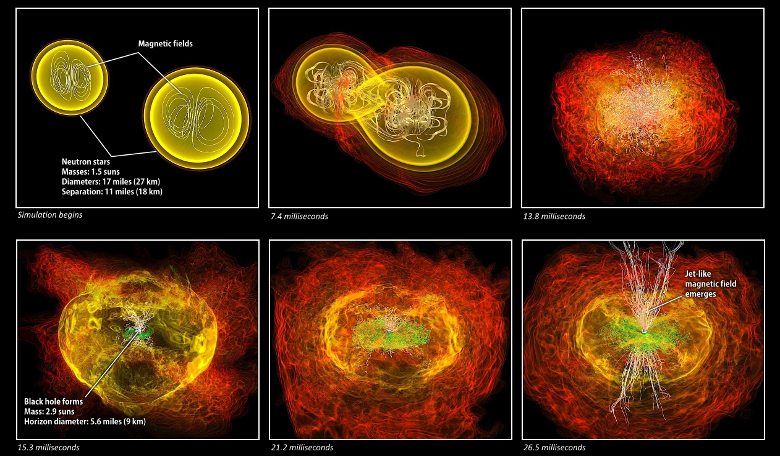Short gamma-ray bursts have long been theorised to occur at the same time that a gravitational wave is created. These are produced when objects such as two neutron stars coalesce or when a neutron star and black hole collide, now however, the team behind the discovery of the first detected gravitational wave say that after observing 41 gamma-ray burst events, no connection between the two can be found.
Gravitational waves – also known as 'ripples' in the fabric of space-time – hit the headlines earlier this year when the phenomenon predicted by Einstein over a hundred years ago as part of his General Theory of Relativity was detected by astronomers using the Laser Interferometer Gravitational-Wave Observatory or LIGO for short.
These distortions in spacetime are caused by some of the most violent and energetic processes in the Universe and it was gravitational waves produced by two colliding black holes nearly 1.3 billion light years away that were detected by members of the LIGO Scientific Collaboration (LSC). Established in 1997, the LSC is currently made up of more than 1000 scientists from dozens of institutions and 16 countries worldwide with the aim of developing the emerging field of gravitational wave science.
Gamma ray bursts (GRBs), which come in two flavours – long and short – are, as the name suggests, transient flashes of gamma radiation, which makes them some of the most energetic astrophysical events observed in the electromagnetic spectrum. Scientists have long suspected a connection between the two I.e. short-GRBs and gravitational waves (GWs), and finding a link would not only provide new astrophysical insight into the objects behind these transient phenomena, but it would confirm, in the case of a binary neutron star merger, where this event occurred (and proof that it actually happened).
However, it is looking likely that scientists will be waiting longer to discover the true source of short-GRBs, as the team behind the monumental GW discovery have presented results of a search for GWs associated with GRBs detected by the Fermi and Swift gamma-ray satellites, that shows no connection between the two could be found.
The search concentrated on looking for gravitational wave signals associated with 41 gamma-ray bursts during a period between September 2015 and January 2016. While it might seem a particularly short timescale in which to look for coincident signals, the investigation does follow on from a similar search, whereby 508 GRBs detected between 2005 and 2010 were examined for corresponding gravitational waves. In an echo of these latest results, that search also showed no evidence for a correlation between the two.
The team also report on the specific case of the search for gravitational waves associated with a GRB event known as GRB 150906B, which lies close to the local galaxy NGC 3313. As this galaxy fitted in with the observing criteria required by advanced LIGO looking for neutron-star binary mergers, it was deemed an appropriate target in which to look for two coincident signals. However, as with the larger search, no evidence connecting GWs with GRBs for either a binary neutron star or a neutron star-black hole merger was found.
For more information on this research, see; https://arxiv.org/pdf/1611.07947.pdf











